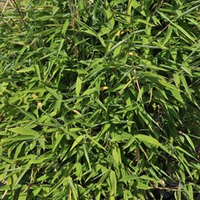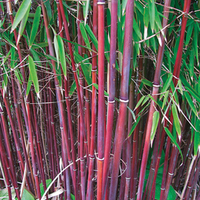How to grow bamboo: expert tips on adding natural screening to your plot
Find out how to grow bamboo to introduce an exotic ornamental look to your garden. It’s such an easy way to make your garden feel more private too
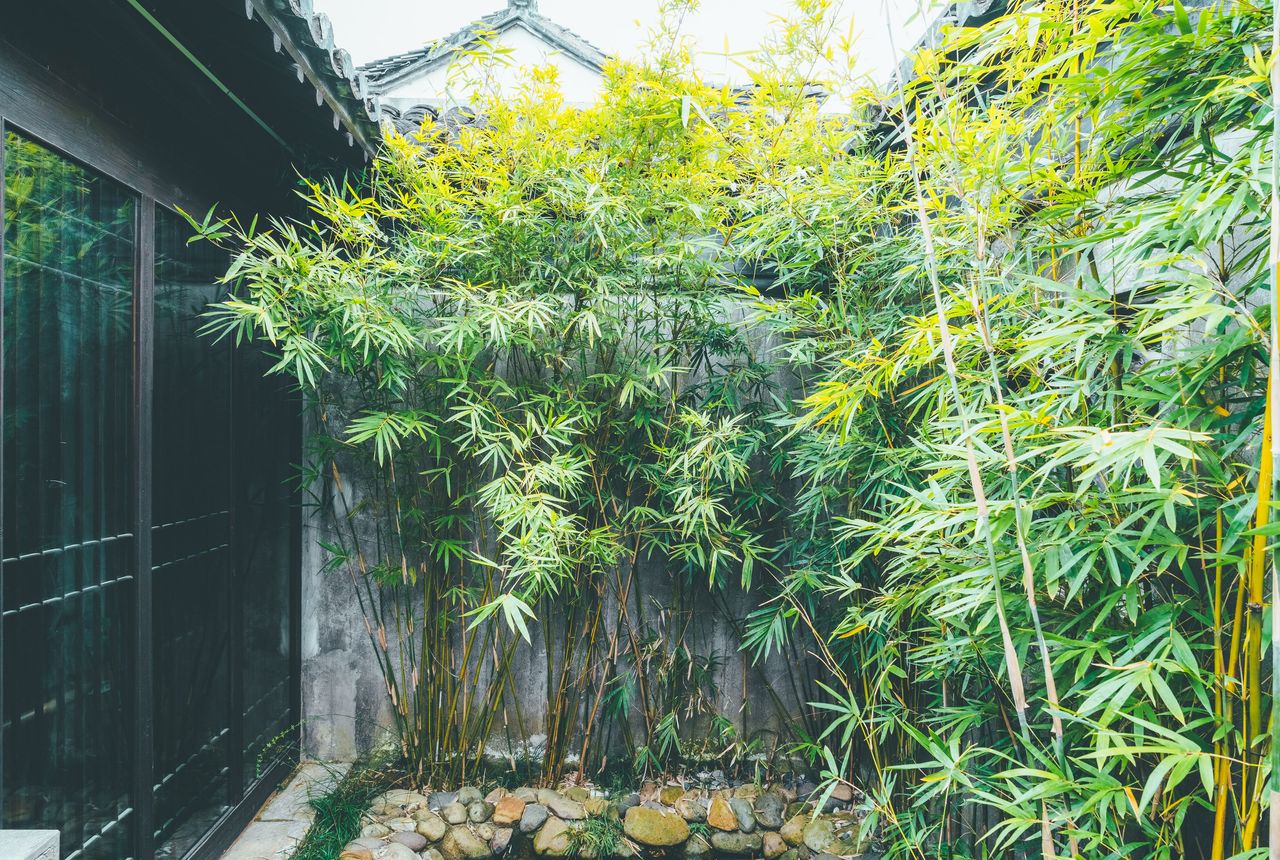

Once you’ve learned how to grow bamboo it will become a firm favourite. It adds a modern design touch to your garden style, the canes forming an airy green screen that shifts and ripples in the breeze to add movement to your planting. It’s practical as well as looking good, as it can be used to enhance boundaries and add privacy. Most will grow to around 4 meters but some varieties grow as tall as 6 meters. As well as helping to relax you, the soothing rustle of the foliage can also help to screen traffic noises.
Lush bamboo adds an exotic note to your planting and looks striking grown in blocks to add an ornamental note to minimal contemporary designs and Japanese-inspired gardens. There are many different varieties to choose from that will do well in most climates. Buy large specimens now from the garden center or online to slot into any gaps in borders to add impact or group them together in containers on your patio to create a zen feel. It’s a low-maintenance plant too, it just gets on with the business of looking good without any need to faff around with it.
It’s important to choose well-behaved varieties though if you don’t want the bamboo taking over your garden. The invasive varieties have underground runners that can pop up all over your garden and once established they’re hard to get rid of. Read on to find out how to grow bamboo, along with the best types to grow and which ones to avoid. And don’t miss our flowerbed ideas for more planting inspiration.
How to grow bamboo
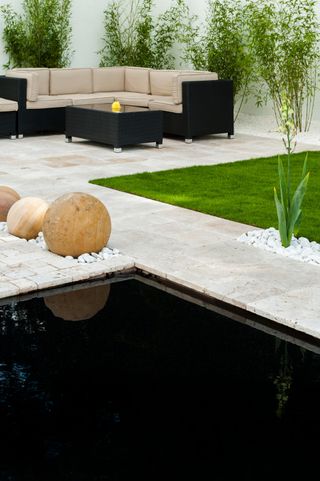
Learn how to grow bamboo if you're looking for a way to add interest to a modern garden
Follow these key pointers on how to grow bamboo to help your plants thrive:
- Bamboo is easy to grow and fully hardy
- It is best to plant bamboo in moist well-drained soil
- Dig in well-rotted garden compost or manure before planting
- Bamboo will thrive in a sheltered, sunny spot
- It doesn’t like wet conditions
- Bamboo doesn’t do well in drought
What are the best varieties of bamboo?

There are several varieties of bamboo to choose from
There are many forms to choose from if you're considering how to grow bamboo, but Phyllostachys is the most widely available. It’s easy to grow if well-watered and fed, creating a wonderful year-round display that adds impact. If you’re looking for a well-behaved version that's suitable for small garden ideas, try Phyllostachys bisseti, Phyllostachys nigra or Phyllostachys viridiglaucescens. But beware: although they’re clump formers, once established they're still liable to spread, so it's important to restrain their roots.
Perhaps the most popular, the black bamboo Phyllostachys nigra is grown for its distinctive stems, which start off green then turn glossy black, contrasting well with the bright green leaves. It has a tall, upright habit that adds impact to a border, or in blocks for a modern look. It grows to a height of around 3-5 meters, with a spread of around 2-3 meters.
Fargesia murielae copes well with dry soils and exposed sites, and is good for garden privacy ideas. The closely spaced, arching canes are slow-spreading, so it won’t engulf your garden. Use it at the back of a border or in a container. It grows to a height and spread of around 4 meters.
Is it easy to learn how to grow bamboo?
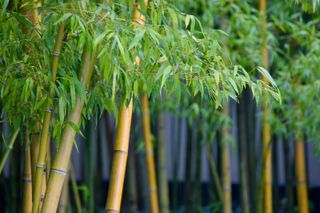
Bamboo is fast growing and requires little maintenance
Bamboo is simple to grow and will even become rampant if left to its own devices. It comes in two varieties, known as clump forming or free running.
Running bamboos spread by horizontal underground stems called rhizomes and grow quickly if not contained. Restrict them to where you want them to grow with a strong root barrier made of concrete. Common varieties include Phyllostachys aurea, Phyllostachys nigra, Pleioblastus variegatus and Sasa veitchi.
Clumping bamboos grow more slowly but even they can become invasive if left unchecked, so if in doubt always contain in a barrier. Common varieties include Fargesia murielae ‘Simba’, Fargesia murielae ‘Jumbo’ and Fargesia nitida.
When is the best time to plant bamboo?
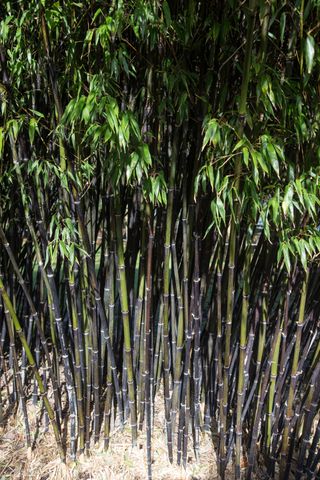
Bamboo can be planted at most times of the year
When it comes to how to grow bamboo, the good news is that bamboo is suitable for planting throughout the year, although not in winter if the ground is frozen or your garden is cold or exposed. If this is the case, wait until spring which is generally considered the best time to plant them.
New plants will become established and ensure a good supply of fresh bamboo canes in summer, as they are produced by the rhizomes, which store energy and are dormant from autumn to spring. Alternatively, planting in autumn allows the roots to spread into the surrounding soil before it becomes dormant during winter.
Where is the best place to plant bamboo?
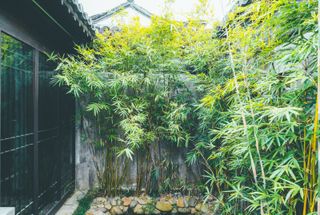
Bamboo can help to disguise fences
Choose a spot where your bamboo plant will get some protection from cold, drying winds to help protect the plant. Most varieties also like some sun and typically the more sun they get, the better the color of the bamboo stems.
If you haven't got the time or budget to update your garden fence ideas, bamboo can be a good option for planting in front of unattractive garden boundaries to hide them from view.
How to plant bamboo in the ground
- Dig the planting hole 1.5 to 2 times the width and depth of the bamboo root ball.
- Before planting your bamboo, dig in some well-rotted garden compost or manure to enrich the soil and provide a nutrient boost. This will also improve the soil's ability to retain moisture. If you have heavy clay soil, mix in some gravel or grit when planting.
- Give the new bamboo a good soaking in a bucket of water 20 minutes before planting so the water soaks into the root ball.
- Remove the bamboo from the pot, making sure you don’t damage the rhizomes in the process. Bamboo has a dense root system that needs gently loosening before planting. Tease the roots apart if you can as this will help stimulate fresh root growth once it's planted.
- Add a layer of compost at the bottom of the hole then position the bamboo plant, backfill with soil and firm in around it well.
- Finish with a layer of mulch (garden compost, leaf mould, manure or chipped bark) around the base of the bamboo to add nutrients for healthy growth, reduce water loss and suppress weeds. There's tips on mulching and how to compost in our guides.
Can I grow bamboo in a pot?
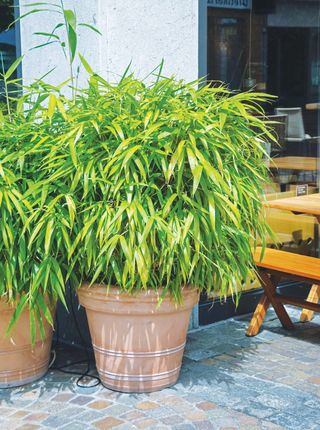
Smaller varieties of bamboo are ideal for growing in pots
Keen on trying how to grow bamboo but only have space for growing it in pots? The good news is that most bamboo can be grown in pots as long as the pot is large enough for the plant. Smaller bamboos make particularly good options for your container gardening ideas.
If you’re opting for a taller variety that may catch the wind, opt for sturdy low rectangular tubs to keep them anchored. Use a combination of loam based potting compost like John Innes No 3 mixed with some granular fertilizer.
Bamboos in pots are great for adding structure and movement to planter displays, plus you won’t need to worry about the bamboo taking over your garden. You can move them around to act as temporary screens too. Most bamboos are tall and narrow, so ideal for balcony garden ideas, courtyard garden ideas and patios where space is tight.
A container that drains well is also essential, so make sure there are drainage holes in the bottom. Put it on pot feet too so the bamboo roots don’t become waterlogged. When planting, be sure to add some controlled release fertilizer and water-retaining gel to the compost. During summer, water frequently and treat your plants to a liquid feed regularly.
Reduce watering and stop feeding in winter but make sure the containers do not dry out. In very cold weather, insulate your bamboo with bubble wrap or move them to a frost-free spot.
How long does it take for a bamboo tree to grow?
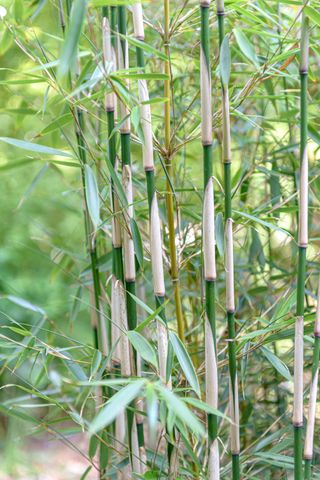
Bamboo grows quickly and easily so can be a good choice if you want a fast growing boundary
In the right conditions some varieties of bamboo can grow as fast as a couple of inches in a day! Running bamboos are good for quickly creating hedging and screening. They generally grow around 90cm to 1 metre a year. There's more ideas for the best fast growing hedges in our guide.
Clump forming bamboos spread more slowly. They look good as ornamental plants to add vertical height and movement in borders. They are the preferred option for containers too. They tend to grow around 30-60cm a year.
The more you feed your bamboo, the more it will grow. Use a general purpose plant food twice a year in spring and summer, more often if your plants are in containers. Clump-forming varieties respond well to feeding but there’s no need to feed the running varieties as they are vigorous enough as it is.
How to care for bamboo
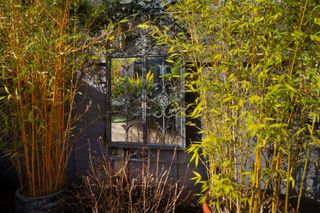
You'll need to ensure newly planted bamboos are well watered
One of they key things to remember for how to grow bamboo is that newly planted bamboos require frequent watering until they become established. You'll probably need to be watering plants as much as three or four times a week in the height of summer. They will eventually become more drought resistant. Make sure the water can drain away freely so your bamboo plants don’t get waterlogged roots.
In spring, any dead or spindly canes should be cut right back to the ground with the best secateurs. Cut just above a node. This will allow light and air into the centre of the plant to keep it healthy. If you like a minimal look, try removing all lower branches and foliage so that the sleek and stylish canes are on display.
Protect smaller bamboos from hot sun, particularly if they are shade lovers such as Fargesia.
How to care for bamboo in a container
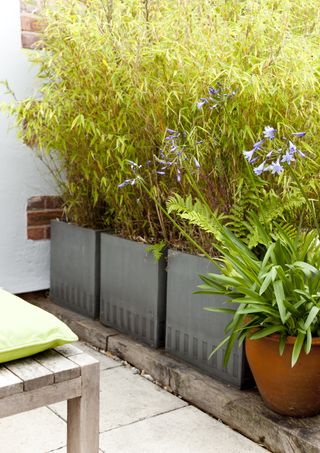
Need some pointers on how to grow bamboo in containers? You'll need to make sure you water them regularly
Bamboo grown in containers require more care because they’re sensitive to heat and strong winds can tip them over. The restricted root space means they dry out more quickly.
They become pot bound and should be lifted, divided and repotted every two to five years. Do this in spring, before the main growing season. If bamboos stay pot bound for too long they will inevitably suffer as there are less and less nutrients available to support a growing plant. Follow our tips on how to repot a plant below:
How to repot a bamboo plant
- Generally it’s time to repot if you notice the leaves becoming yellow and the plant’s foliage looking increasingly sparse.
- Water your plants well before you lift and divide them to minimize the shock.
- Ease the plant out of its container, being careful not to damage the root system.
- Remove any dead or damaged roots.
- Split the plant into two or three sections for repotting or removal.
- Use fresh multi-purpose compost mixed with water-retaining gel and multi-purpose fertilizer granules.
How do I protect my bamboos in winter?
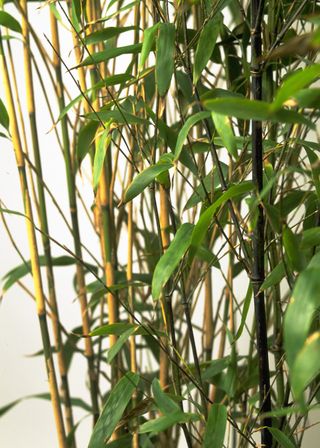
There are several easy ways to protect your bamboo plants from the cold weather
Protecting your plants from adverse weather conditions is an important part of how to grow bamboo. Container-grown bamboo is less hardy than those planted in borders. It does not have the insulating effect of the soil surrounding the roots during the winter, making it more exposed to the elements.
Protect the canes and roots from frost, snow and ice by wrapping a few layers of horticultural fleece, sacking or bubble wrap loosely around them when frost is forecast. Alternatively, bring your plants indoors until the cold snap passes.
There's more tips on how to protect plants from winter in our guide.
How to grow bamboo from a cutting
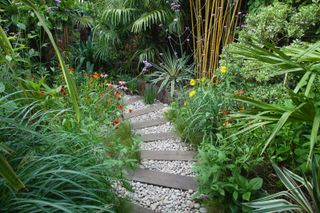
Another way for how to grow bamboo is to grow it from a cutting, and it’s easy to do. First, choose a sturdy cane to cut from. Look for a section with two or three nodes where the leaves grow from. Make a clean cut with secateurs.
Trim off any foliage. Fill your chosen container with potting soil. Push the section of cane into the soil leaving one node exposed. Keep the soil damp by watering when the top feels dry to the touch. New growth should appear within one month.
If you already have well established bamboo plants it’s a good idea to divide the bamboo every couple of years using a saw to cut through the root ball. This will ensure fresh new growth, and at the same time give you new plants to pot up.
Want to get more free plants in your garden? Our guide on how to take cuttings from plants has lots more tips.
What problems affect bamboos?
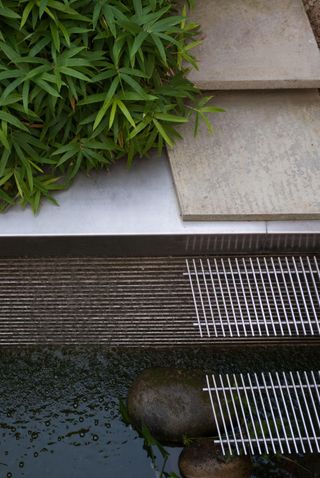
Bamboo looks good in contemporary designs
Bamboos are evergreen and renew their leaves in spring, when lots of the old leaves turn yellow and drop off. This is entirely natural and nothing to worry about. This happens to Phyllostachys and Fargesia varieties in particular.
However, if large parts of your plants turn yellow, it may indicate a more serious problem. This could be caused by poor soil, insufficient nutrients and over or under watering. Replenish the soil with a rich feed and make sure you're providing sufficient water particularly on hot, dry days.
If your bamboo is troubled by sticky mites or insects, use the best garden hose on the strongest setting every week or two which can be very effective to 'power wash' your bamboo. It will not harm the leaves. Or try using neem oil, an organic insecticide that kills mites and insects.
Where to buy bamboo plants
Buy bamboo plants from the garden centre or online. Shop bamboos at the below suppliers, or keep scrolling for some of our favorite picks at the end of the article.
Where to buy bamboo plants in the UK:
- Shop bamboo at Amazon
- Shop bamboo at Crocus
- Shop bamboo at Dobies
- Shop bamboo at Suttons
- Shop bamboo at Thompson & Morgan
- Shop bamboo at Waitrose Garden
- Shop bamboo at You Garden
Where to buy bamboo plants in the US:
4 VARIETIES OF BAMBOO TO TRY IN YOUR GARDEN
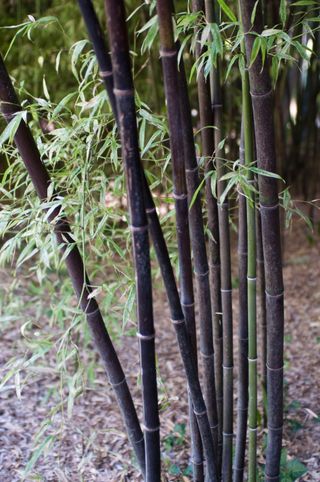
Phyllostachys nigra
With so many wonderful colors and varieties to choose from you're spoiled for choice when it comes to how to grow bamboo. Here's a round-up of some of our favorite bamboo varieties.
Fargesia Murieliae from Dobies
Tropical looking and wind resistant, this is brilliant for screening in the garden. It's ideal for filling awkward spots, or hiding unwanted features. The arching yellow-green canes have foliage that looks like an umbrella. Has earned an RHS Award of Garden Merit.
Phyllostachys Nigra from Suttons
Attractive green canes mature to glossy black for an architectural focal point. The masses of slender leaves remain evergreen for year round interest. Phyllostachys nigra is a clump-forming species that can tolerate UK winters and grows to a height of 4 meters.
Umbrella Bamboo 'Asian Wonder' from Thompson & Morgan
Easy to grow and quick to fill out this is a top choice for privacy screening and blocking road noise. Young plants produce green stems, but once established in the garden after 3 to 5 years turn ruby red giving it a tropical look. Grows to a height of 3 meters.
Green Bamboo Phyllostachys bissetti from You Garden
One of the easiest varieties, this forms dense clumps, so is ideal for hedges or screening, and adds an exotic look to patios. It's vigorous and slowly invasive, so best planted in large pots. Remove lower leaves to show off the canes at their best. Grows to 5 meters.

Lifestyle journalist Sarah Wilson has been writing about gardens since 2015. She's written for Gardeningetc.com, Livingetc, Homes & Gardens, Easy Gardens and Modern Gardens magazines. Having studied introductory garden and landscape design, she is currently putting the skills learned to good use in her own space where the dream is establishing a cutting garden.
-
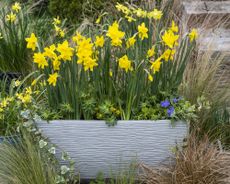 An Update on Gardeningetc
An Update on GardeningetcA word from our publisher
By Beth Murton Published
-
 Do you need to chit potatoes? Find out what the experts say
Do you need to chit potatoes? Find out what the experts sayGrow Your Own Learn how to chit potatoes before planting them in the ground and you’ll be on your way to getting an earlier and bigger harvest
By Drew Swainston Published
